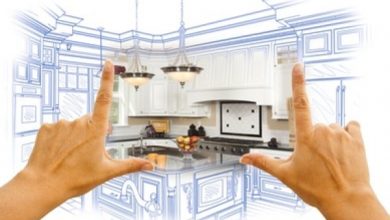Things To Consider Before Buying Composite Decking

Residential decks are increasingly using non-wood surface Composite Decking materials, which were once dominated by woods like cedar. These items are typically grouped together under the term “composites,” and they are now so widely used for outdoor building that practically all home improvement stores have abundant supply alongside conventional cedar. There may be matching railing posts, balusters, and rails available.
Composite Decking

Here are some things to keep in mind while buying composite timber for your deck.
Synthetic Decking isn’t all “Composite”
PVS and plastic (HDPE—high density polyethylene) are two older types of synthetic decking material, although they are now considered outdated and are rarely utilized. True Komposittrall is made from natural wood leftovers like sawdust, as well as plastic or vinyl resins. Recycled bamboo is bonded together with resins in a new variation.
Not all building codes permit the use of composite decking.
Your local building code may prohibit or restrict the use of non-wood “lumber” in deck construction. It may allow composites for surface decking but prohibit them for stair treads or railing elements, for example. Always check with your local building inspectors to see what materials are permitted for deck construction. Composites are becoming increasingly popular for decks, but always double-check. Also, avoid utilizing composite lumber for support framing of any type. Although several composite versions of 2 x framing timber are now available, few code areas allow it to be used for structural or load-bearing purposes.
Composite Wood isn’t just for decking

The first synthetic woods were just decking planks to be laid on the deck’s surface, but today’s producers provide a wide range of goods, including railings and balusters, staircase treads and railing sections, post caps, latticework, and fascia boards. Kompositplank are commonly available in lengths of 12, 16, and 20 feet. Before using composite lumber for railings or stairways, verify with your local building codes.
Composite lumber is not cheap.
Composite decking can cost two to three times as much as cedar planking of equal quality. Trex, for example, costs $3 to $7 per square foot. However, the difference between pricey and less priced composites is design, color, and texture, not quality. Always start with the less expensive options, and if they meet your design requirements, go with them.
Higher-quality items to make it look like wood
The finest (and more expensive) composites have a highly realistic texture that looks surprisingly like wood. Some even have different patterns and tones, so nearby boards don’t have the same color and design. Some builders are increasingly opting for composites instead of fine cedar or redwood because of this level of attention to detail. However, rough composite boards can retain dirt and grime, making them difficult to clean, even with a power washer. And, especially in shaded, moist areas, composites are vulnerable to mildew and algae stains.
When wet, composites can be slick.
When wet, composite boards can become slick, especially the smooth varieties with little or no grain. If you’re thinking about utilizing composites for pool decks or stair treads, keep in mind that your local building code can prohibit it. Composites may also be highly slippery underfoot in icy areas. Choose a composite with a prominent texture in such circumstances.


